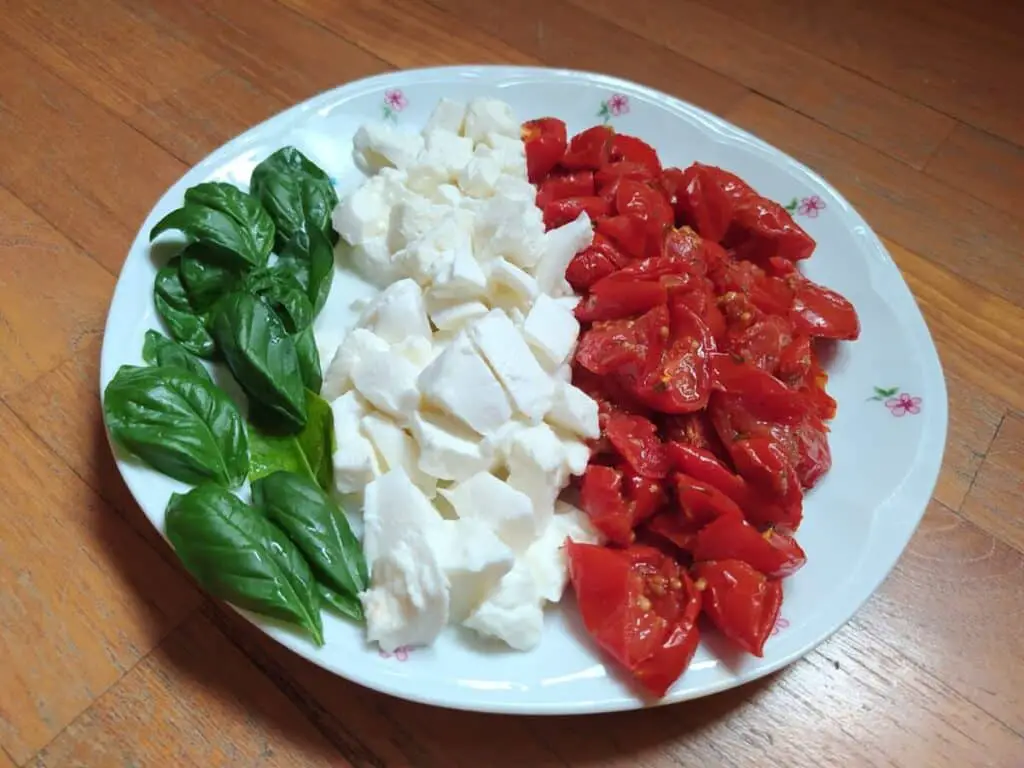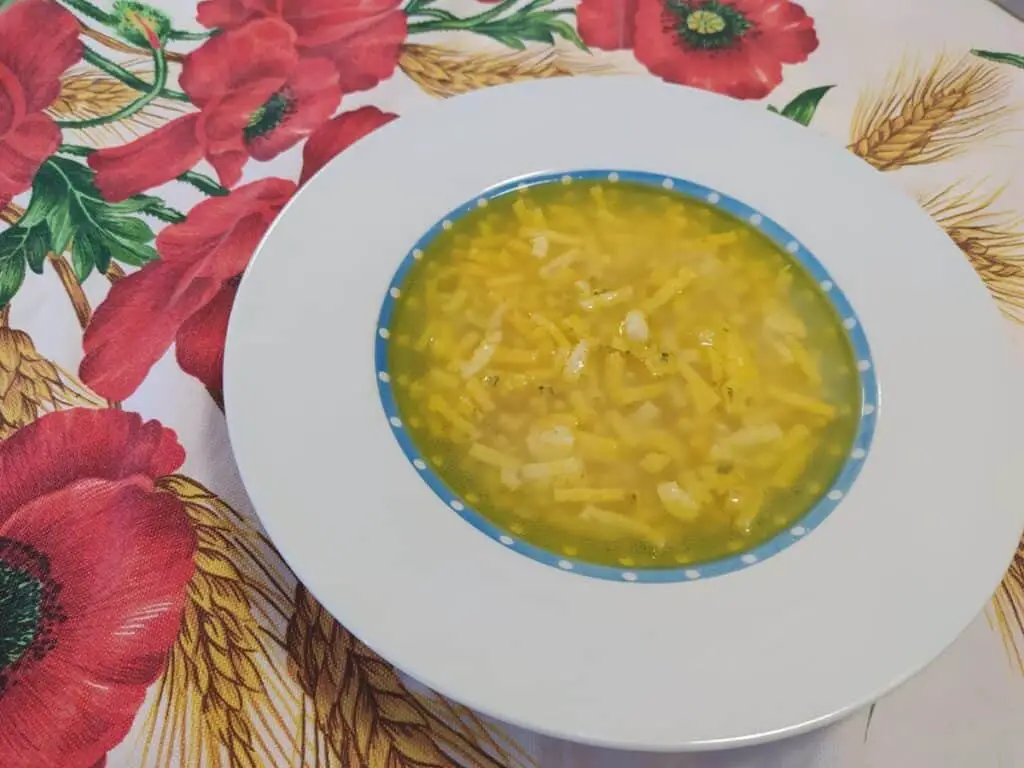Italy is world renowned for its cuisine, so it is not surprising that the Italian language has a wealth of adjectives to describe food.
If you are studying Italian, and are learning how you can describe food, you’ll likely have come across the adjective “buono” (good), as this is one of the first few adjectives that students of Italian typically learn.
If you would like to go beyond the basics, and learn some more nuanced and advanced adjectives to describe food in Italian, this article is for you.
How do you describe food in Italian?
The Italian formula to describe food is “Questo cibo è…” (this food is…) followed by the adjective that describes the food. Adverbs and adverbial phrases that act as intensifiers (such as “molto” – very) or downtoners (such as “non troppo” – not too) are also very useful to make your description of food more nuanced. As a general rule, these are placed before the adjective.

An adverb is a word that can be used to modify an adjective such as “early” and and adverbial phrase is a group of words that has the same effect as an adverb, such as “not too early”.
Here is a list of adverbs and adverbial phrases that you can use to make your description of food in Italian more nuanced:
- Molto – very
Questa cioccolata è molto amara
This chocolate is very bitter
- Un po’ – a little
Il pane è un po’ raffermo
The bread is a little stale
- Non molto – not very
Il pranzo non è molto salutare
The lunch isn’t very healthy
- Troppo – too
Il sugo della pasta è troppo salato
The pasta sauce is too salty
- Non troppo – not too
La pizza non è troppo piccante
The pizza isn’t too hot
- Abbastanza – quite / enough
Il dolce era abbastanza pesante
The dessert was quite heavy
- Leggermente – slightly
Questo vino è leggermente acido
This wine is slightly acidic
Note that adjectives in Italian must agree in gender and number with the words that they refer to. To make this gender and number agreement jump out, in the examples above I have bolded the adjectives and the words that they refer to.
General Italian adjectives to describe food quality and flavour
To talk about the flavour of a food in Italian, you can use the phrase “Questo cibo ha un sapore…..” – “This food has a flavour…” followed by the adjective that describes the flavour.
For example:
Questa carne ha un sapore molto delicato
This meat has a very delicate flavour
Here is a list of Italian adjectives that you can use to describe the flavour of food or food quality:
- Saporito – flavourful / with a strong taste
- Amaro – bitter
- Affumicato – smoked
- Raffermo – stale
- Salato – salty
- Secco – dry
- Acido – acidic
- Piccante – hot
- Aspro – tangy
- Pungente – pungent
- Profumato – perfumed
- Aromatico – aromatic
- Dolce – sweet
- Acre – sharp
- Agrodolce – sweet and sour
- Locale – local
- Delicato – delicate
- Dolciastro – slightly sweet
- Amarognolo – slightly bitter
- Acerbo – not ripe (of fruit)
How to praise food in Italian
A useful Italian phrase to introduce your description of a food is “Questo cibo ha un aspetto…” – literally, “this food has a looks….” followed by the adjective that describes it.
For example:
Questo piatto ha un aspetto delizioso
This dish looks delicious
Here is a list of positive Italian adjectives that you can use to praise food:
- Delizioso – scrumptious/ delicious
- Gradevole – pleasant
- Buono – good/ tasty
- Appetitoso – inviting
- Divino – divine / heavenly
- Gustoso – tasty
- Squisito – exquisite
- Ottimo – excellent
- Salutare – healthy
- Eccellente – excellent
- Leggero – light
- Digeribile – digestible
- Spettacolare – spectacular
- Invitante – inviting
- Allettante – inviting
- Stupendo – incredible
How to make negative comments about food in Italian
If you wish to make a negative comment about food in Italian, but want to avoid being too harsh, one good solution is to say something positive first, followed by the negative comment. The negative comment can be introduced by a conjunction such as “ma” (but). Adverbs which moderate the adjectives can also be very useful in this case.
These are examples of negative comments in Italian about food that are phrased not to sound too harsh:
Questa minestra è buona ma troppo salata
This soup is good but too salty

Questa torta è eccellente ma un po’ stomachevole
This cake is excellent but a little sickly sweet
Here is a list of negative Italian adjectives about food:
- Pesante – heavy / stodgy
- Insipido – bland / not salty enough
- Cattivo – bad / nasty
- Avariato – gone bad / expired
- Sgradevole – unpleasant
- Stomachevole – sickly sweet (when you eat too much of a sweet food)
- Dannoso – unhealthy
- Indigesto – not digestible / heavy
- Rancido – rancid
- Scaduto – expired
- Orribile – horrible
- Stucchevole – sickly sweet (when you eat too much of a sweet food)
Italian adjectives to describe meat
There is a whole set of words and phrases that can be used to describe meat, not only in Italian, but in other languages too.

So I decided to put together some meat-specific Italian phrases that can be used to describe meat.
Here are some common types of meat in Italian:
- La carne – meat
- La bistecca – steak
- La tagliata – steak which is served in slices
- L’ hamburger – hamburger
- Le salsiccie – sausages
- Petto di pollo – chicken breast
And here are some specific Italian phrases to describe meat:
- Ben cotta – well done
- Poco cotta – medium rare
- Al sangue – rare
- A cottura media – medium
Here is an example of how you can say that your steak is too rare in Italian:
Questa bistecca è troppo al sangue per i miei gusti
This steak is too rare for my taste
Italian adjectives to describe drinks
Note that some of the adjectives above to describe food in general can also be applied to drinks.
Here are some specific adjectives to describe water in Italian:
- Frizzante – sparkling
- Gassata – fizzy
- Naturale – natural
- Minerale – mineral

Here are some specific adjectives to describe wine in Italian:
- Delicato – delicate
- Fruttato – fruity
- Maturo – mature
- Rosso – red
- Bianco – white
- Fermentato – fermented
- Profumato – perfumed
For wine, the word “nota” (note) may be useful, particularly in the plural form. For example:
Questo vino ha delle note aromatiche
This wine has aromatic notes
How do you compliment a chef in Italian?
You may be in a situation where you wish to compliment the person who cooked the food in Italian. Here are some useful Italian sentences to show that you appreciate the chef:
- Complimenti al cuoco – congratulations to the chef
- Il cibo è eccellente, contratulazioni – the food is excellent, congratulations
- Il cibo è buonissimo, bravissima/ bravissimo – the food is great, well done (more informal)
Describing food in Italian is easy
Learning to describe food in Italian is not too hard, because there isn’t a lot of grammar involved. In terms of verbs to use, you are likely to mostly need the verb “to be” in the third person singular (“it is” – “è”) and third person plural (“they are” – “sono”).
The key to describing food in Italian is learning some useful adjectives and making good use of adverbs and adverbial phrases such as “very”, “not very” to add nuances to what you are saying.




